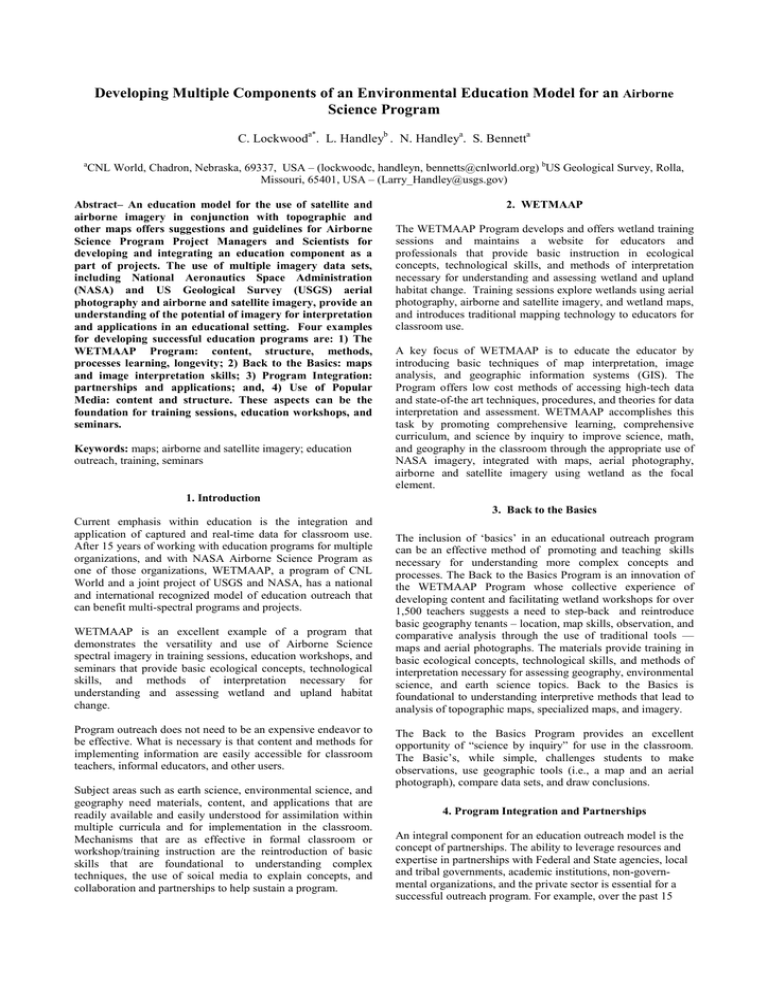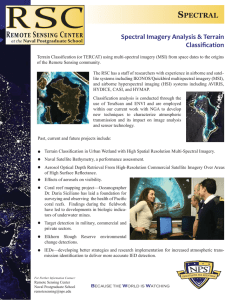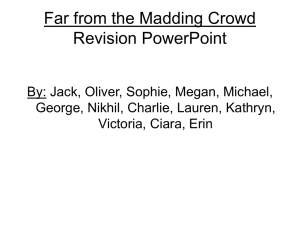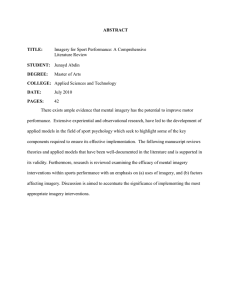Developing Multiple Components of an Environmental Education Model for an Airborne
advertisement

Developing Multiple Components of an Environmental Education Model for an Airborne Science Program C. Lockwooda*. L. Handleyb . N. Handleya. S. Bennetta a CNL World, Chadron, Nebraska, 69337, USA – (lockwoodc, handleyn, bennetts@cnlworld.org) bUS Geological Survey, Rolla, Missouri, 65401, USA – (Larry_Handley@usgs.gov) Abstract– An education model for the use of satellite and airborne imagery in conjunction with topographic and other maps offers suggestions and guidelines for Airborne Science Program Project Managers and Scientists for developing and integrating an education component as a part of projects. The use of multiple imagery data sets, including National Aeronautics Space Administration (NASA) and US Geological Survey (USGS) aerial photography and airborne and satellite imagery, provide an understanding of the potential of imagery for interpretation and applications in an educational setting. Four examples for developing successful education programs are: 1) The WETMAAP Program: content, structure, methods, processes learning, longevity; 2) Back to the Basics: maps and image interpretation skills; 3) Program Integration: partnerships and applications; and, 4) Use of Popular Media: content and structure. These aspects can be the foundation for training sessions, education workshops, and seminars. Keywords: maps; airborne and satellite imagery; education outreach, training, seminars 2. WETMAAP The WETMAAP Program develops and offers wetland training sessions and maintains a website for educators and professionals that provide basic instruction in ecological concepts, technological skills, and methods of interpretation necessary for understanding and assessing wetland and upland habitat change. Training sessions explore wetlands using aerial photography, airborne and satellite imagery, and wetland maps, and introduces traditional mapping technology to educators for classroom use. A key focus of WETMAAP is to educate the educator by introducing basic techniques of map interpretation, image analysis, and geographic information systems (GIS). The Program offers low cost methods of accessing high-tech data and state-of-the art techniques, procedures, and theories for data interpretation and assessment. WETMAAP accomplishes this task by promoting comprehensive learning, comprehensive curriculum, and science by inquiry to improve science, math, and geography in the classroom through the appropriate use of NASA imagery, integrated with maps, aerial photography, airborne and satellite imagery using wetland as the focal element. 1. Introduction 3. Back to the Basics Current emphasis within education is the integration and application of captured and real-time data for classroom use. After 15 years of working with education programs for multiple organizations, and with NASA Airborne Science Program as one of those organizations, WETMAAP, a program of CNL World and a joint project of USGS and NASA, has a national and international recognized model of education outreach that can benefit multi-spectral programs and projects. WETMAAP is an excellent example of a program that demonstrates the versatility and use of Airborne Science spectral imagery in training sessions, education workshops, and seminars that provide basic ecological concepts, technological skills, and methods of interpretation necessary for understanding and assessing wetland and upland habitat change. Program outreach does not need to be an expensive endeavor to be effective. What is necessary is that content and methods for implementing information are easily accessible for classroom teachers, informal educators, and other users. Subject areas such as earth science, environmental science, and geography need materials, content, and applications that are readily available and easily understood for assimilation within multiple curricula and for implementation in the classroom. Mechanisms that are as effective in formal classroom or workshop/training instruction are the reintroduction of basic skills that are foundational to understanding complex techniques, the use of soical media to explain concepts, and collaboration and partnerships to help sustain a program. The inclusion of ‘basics’ in an educational outreach program can be an effective method of promoting and teaching skills necessary for understanding more complex concepts and processes. The Back to the Basics Program is an innovation of the WETMAAP Program whose collective experience of developing content and facilitating wetland workshops for over 1,500 teachers suggests a need to step-back and reintroduce basic geography tenants – location, map skills, observation, and comparative analysis through the use of traditional tools — maps and aerial photographs. The materials provide training in basic ecological concepts, technological skills, and methods of interpretation necessary for assessing geography, environmental science, and earth science topics. Back to the Basics is foundational to understanding interpretive methods that lead to analysis of topographic maps, specialized maps, and imagery. The Back to the Basics Program provides an excellent opportunity of “science by inquiry” for use in the classroom. The Basic’s, while simple, challenges students to make observations, use geographic tools (i.e., a map and an aerial photograph), compare data sets, and draw conclusions. 4. Program Integration and Partnerships An integral component for an education outreach model is the concept of partnerships. The ability to leverage resources and expertise in partnerships with Federal and State agencies, local and tribal governments, academic institutions, non-governmental organizations, and the private sector is essential for a successful outreach program. For example, over the past 15 years, partnerships have produced many accomplishments that contribute to the success of WETMAAP and Back to the Basics. Both programs have provided thousands of formal and non-formal educators with valuable classroom materials and professional development. Cultivating and maintaining long-term relationships with partners through the development of agreements and grants to support map and imagery education and dissemination is foundational to the success of an education outreach program. Partnerships are important because they leverage funding across organizations, foster further collaboration, provide complementary support, and ensure availability of information and materials to a broad range of users and applications. Strong partnerships help to sustain programs. The WETMAAP and NASA Airborne Science Program have a mutually beneficial partnership that promotes the use of airborne imagery in earth science, environmental science, geography, and geosciences curricula. WETMAAP also has partnerships with StateViews, which are a part of the AmericaView Program, to share the WETMAAP methodology and applications for land cover analysis. 5. Social media The use of social media is an excellent means of conveying science, earth science, environmental science, and geography to a general populace and to engage students with current events. Social media includes the use of network sites such as Facebook, exhibits at national and regional conferences, newsletters, and webinars. Social media can be used to illustrate technical applications, explain topical themes for geographic inquiry, and incorporate aerial photography and satellite imagery within a formal or informal setting. Beginning in 2004, the front cover of the Journal of Geography, a publication of the National Council for Geographic Education, has utilized a variety of images including NASA Airborne Science spectral imagery, satellite images, USGS topographic maps, and ground photographs, plus diverse imagery formats such as thermal composite, color infrared, black and white, natural color, and imaging radar to provide a readily available teaching tool. CNL World has expanded the use of imagery into a program, IcEarth, that adds content, scope, and depth for understanding image interpretation, physical and cultural processes, and cross curricula activities related to image interpretation. 6. Summary The design and implementation of an education component for the use of satellite and airborne imagery should include an understanding foundational or basic information, integration of concepts within a comprehensive curriculum, increased use of technology, and partnerships. The challenge is to design a program that engages and meets the needs of formal and informal educators. The WETMAAP methodology is science by inquiry using a building block approach to convey spatial relationships combined with cognitive skills with technical abilities. The intent is to improve science in the curriculum through the use of geospatial technology.




